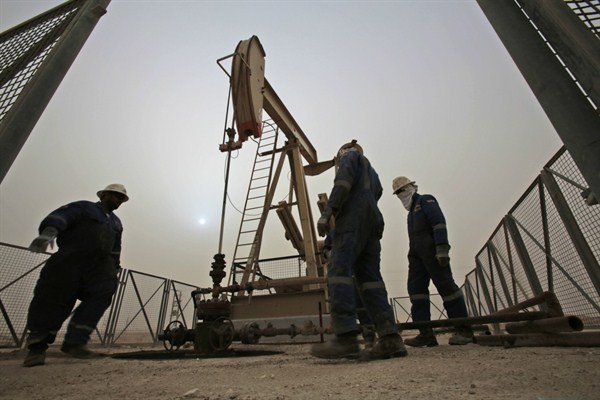On April 1, Bahrain announced that it had made a huge discovery of offshore oil and gas in the Persian Gulf that far exceeds its current reserves. Drilling by two U.S.-based firms confirmed that the Khaleej al-Bahrain basin may contain more than 80 billion barrels of shale oil and around 13.7 trillion cubic feet of natural gas. For the cash-strapped government in Manama, which has faced a mounting fiscal deficit and nagging social pressures, the news came as a major relief.
While just a minor player in the oil market today, Bahrain actually gave birth to the industry on the Arab side of the Persian Gulf. Prospectors first discovered oil at the island nation’s Awali field in 1932, six years before oil was found in Saudi Arabia. Yet beyond a second, shared oil field with Saudi Arabia that it doesn’t control, Bahrain never struck oil again, and the two fields have sustained the country’s economy for much of the past 80 years. Production at Awali, however, has fallen from its peak of over 75,000 barrels per day in 1970 to around 35,000 barrels today.
Before this month’s discovery, Bahrain’s reserves had dwindled to 125 million barrels, as efforts to revive Awali’s production with modern methods and technology had largely lagged. To add to the country’s woes, the precipitous fall in global energy prices in 2014 sent Bahrain’s economy tumbling down with them. Despite having one of the most diverse economies among its peers in the Arab Gulf, the government in Manama remains heavily reliant on revenue from oil exports, which account for roughly 70 percent of its budget.

